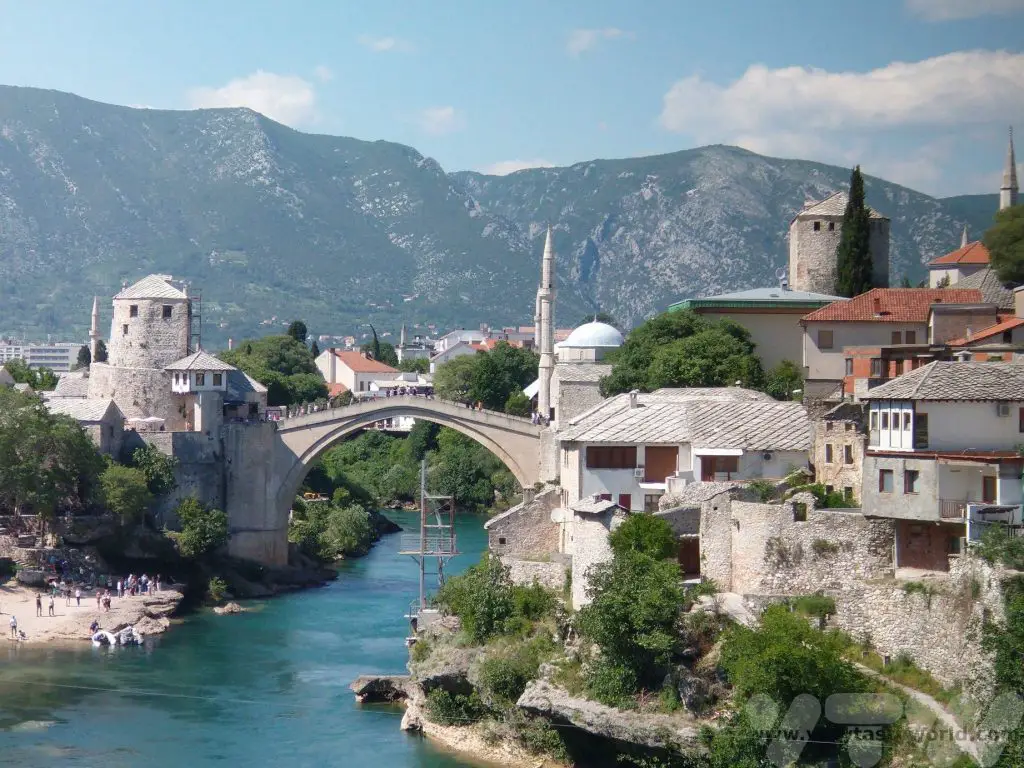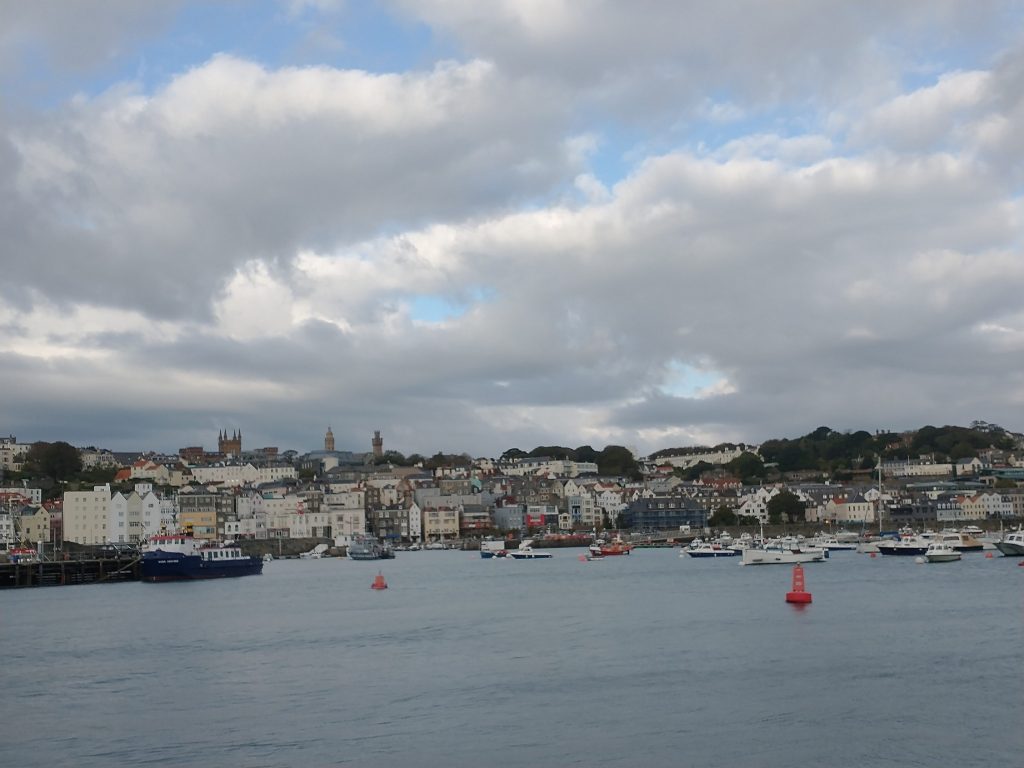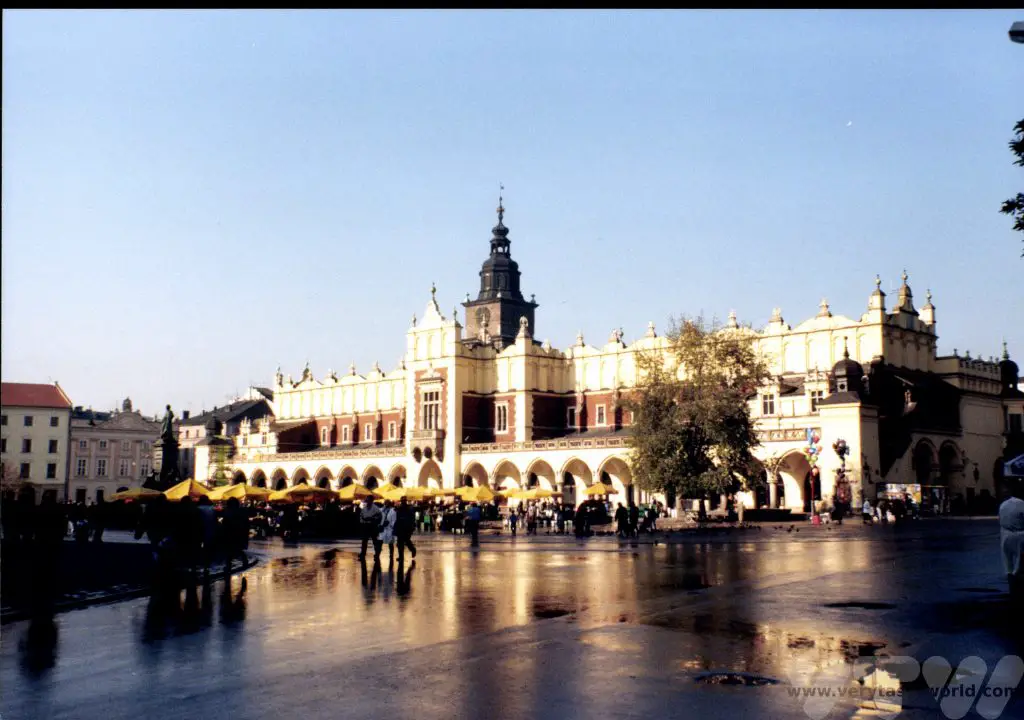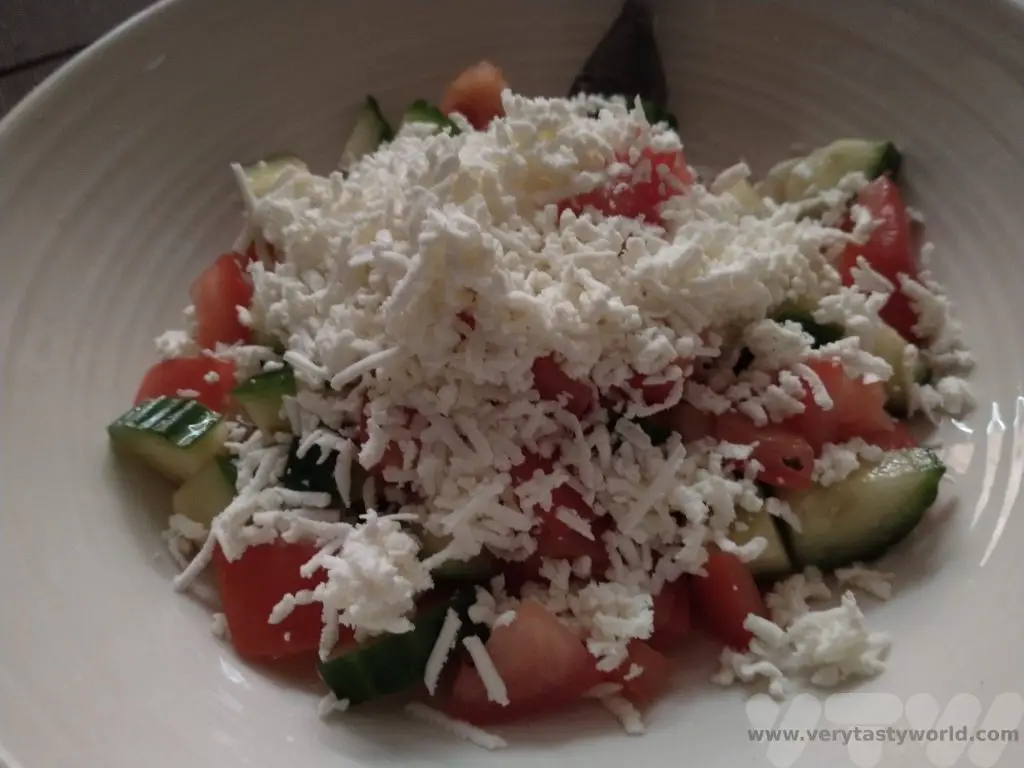A Day in Ronda
Ronda in Andalusia is a charming place to visit. It is most famous for being a town split in two – located on either side of a deep chasm, El Tajo, through which the Guadalevín River flows. It is a magnet for daytrippers – at just 60km from Marbella and 100km from Malaga, both on the Costa del Sol, and around 128km from the wonderful city of Seville. Here’s our guide for spending a day in Ronda.
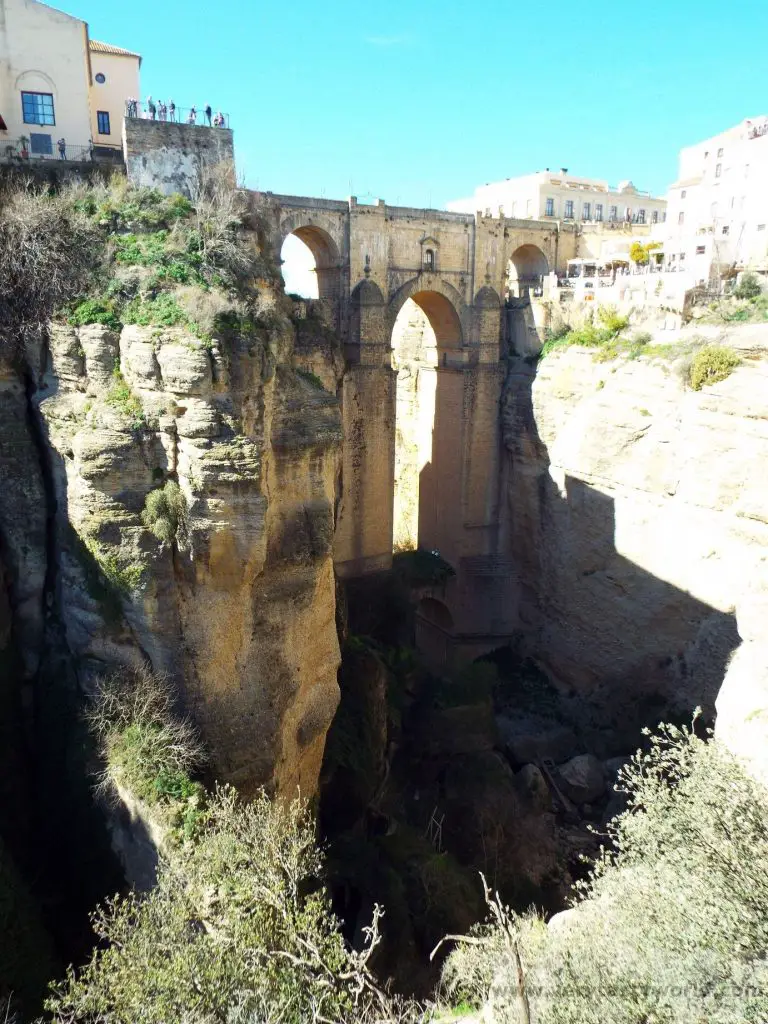
History of Ronda
Ronda is one of the oldest towns in Spain with settlements known to have dated from the Neolithic period. Celtic people arrived in the 6th Century BCE, naming the town Arunda. It was invaded by the Romans and became an important city in the region but fell into decline following the fall of the Roman Empire.
When the Moors, led by Prince Musa Ben Nusayr, conquered Spain in 711 the invaders recognised the strategic importance of its location; Ronda flourished as a city once more and became the capital of one of the five districts in Andalusia. The Moorish influence on the buildings remains to this day. Eventually Ronda became a focal point of Christian armies trying to recapture Southern Spain in the early 13th Century and the conquest of Ronda resulted in Christian knights establishing themselves in the city and replacing mosques with churches. By 1570 the city had become a completely Christian town.
It wasn’t until the 17th century that the major bridges were constructed across the town’s mighty gorge. The Old Bridge – Puente Viejo – was built in 1616. And the Puente Nuevo was completed in 1793, part of a series of buildings constructed in the town, including the famous bullring.
The city was occupied by the French in the 19th Century which resulted in hardship for many of the citizens. It is thought that legends of the guerrilla fighters, known as bandaleros, originated during this era. (There is a museum dedicated to bandits in the town.) Similarly, in the 20th Century the city also suffered significantly during the Spanish Civil War. Apparently the chamber above the arch on the main bridge was used as a prison and torture chamber by both sides, some unfortunate prisoners being thrown to the rocks in the gorge.
These days the town is thriving and is a hugely popular with tourists.
Jardines de Cuenca
The Puente Nuevo Bridge is the town’s most popular attraction and it’s easy to see why. It’s possible to walk down to the hillside to the Jardines de Cuenca, a serene set of gardens that you can wander through and get a spectacular view of Puente Nuevo and the gorge. But don’t forget to turn around and get some shots of the lovely countryside. We were lucky to visit in early spring, when the blossom was just coming out.
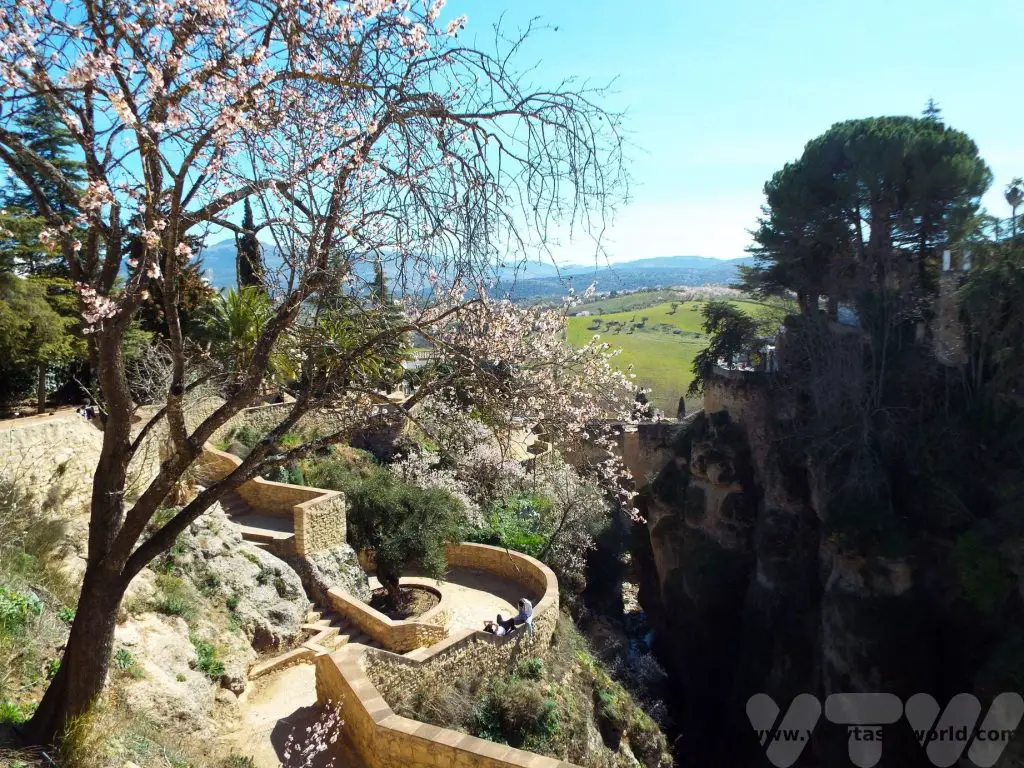
If you want to stay in a hotel or eat at a restaurant with a view of the gorge and bridge, the prices are likely to be higher than in other parts of Ronda. Although the dramatic bridge Puente Nuevo is the main attraction of the town, there are two other bridges in Ronda and both of them are lovely. They are located further down the gorge.
Puente Arabe (also known as the Roman bridge) – is the smallest bridge. Its foundations are Roman but it was rebuilt by the Moors. It is located close to the Arab baths.
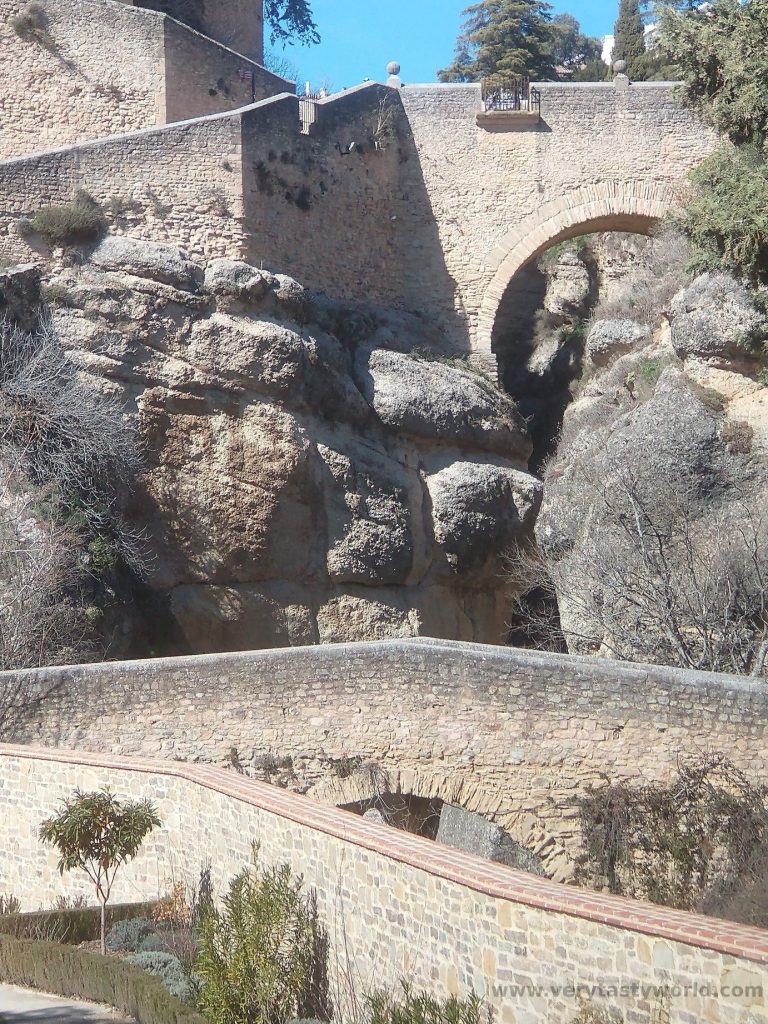
Puente Viejo is the “old bridge”, a single arch bridge constructed in the 16th Century.
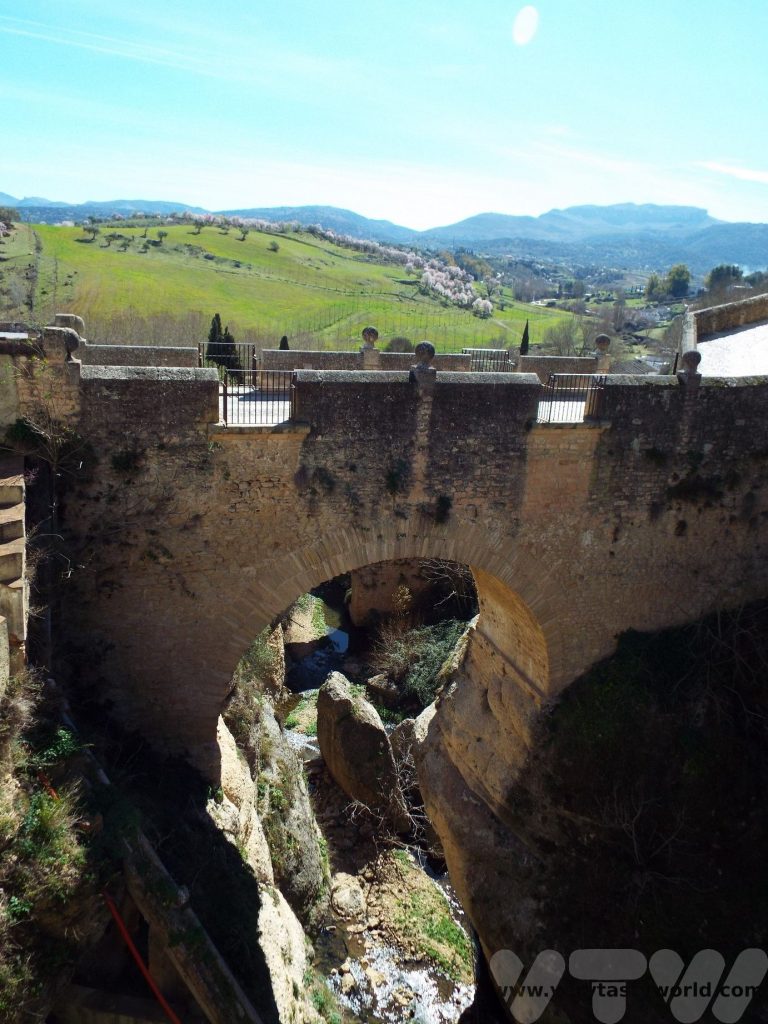
Puente Nuevo is the “new bridge”, even though it was completed over 200 years ago. The interior above the main arch used to be a prison (you can imagine it being very secure!), was briefly a bar and is now a museum dedicated to the history of the bridge.
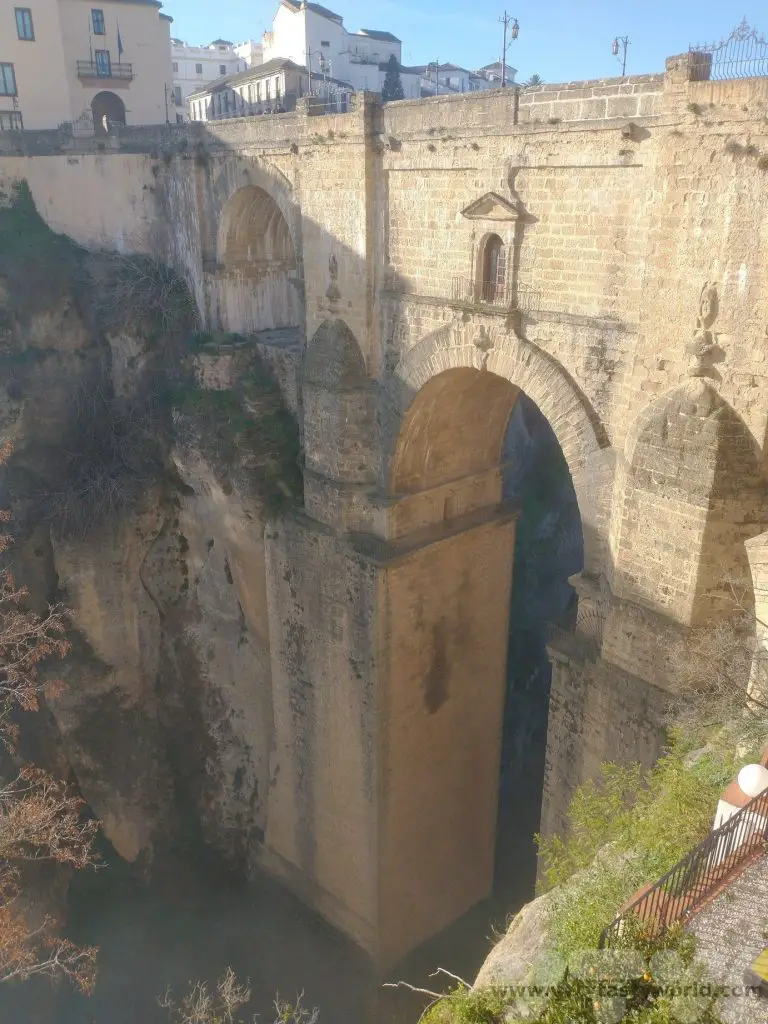
The city walls can easily be reached from the Roman Bridge and it is possible to walk along them to see fantastic views.
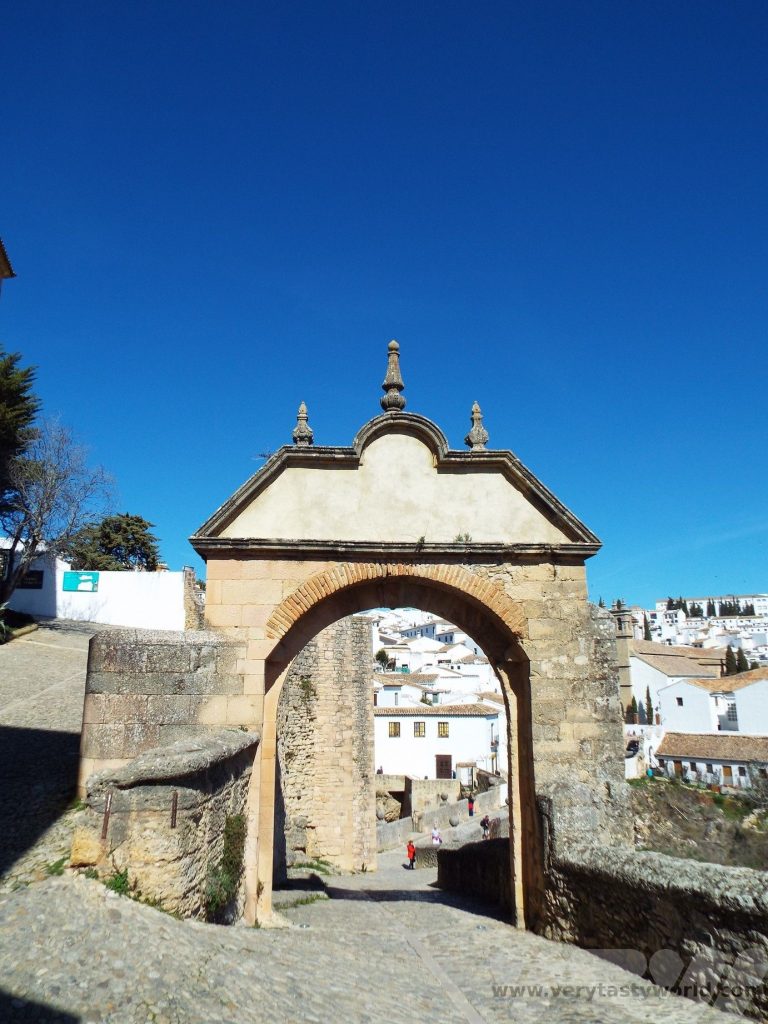
The Arabian Baths
The Arabian Baths are well worth visiting. They are located at the original entrance to Ronda, close to the Roman Bridge. They were built in the 13th Century by the Moors, who were Muslim, and hence placed a very great importance on cleanliness. But they weren’t just for cleaning, they also offered a social space where people would meet as well as bathe.
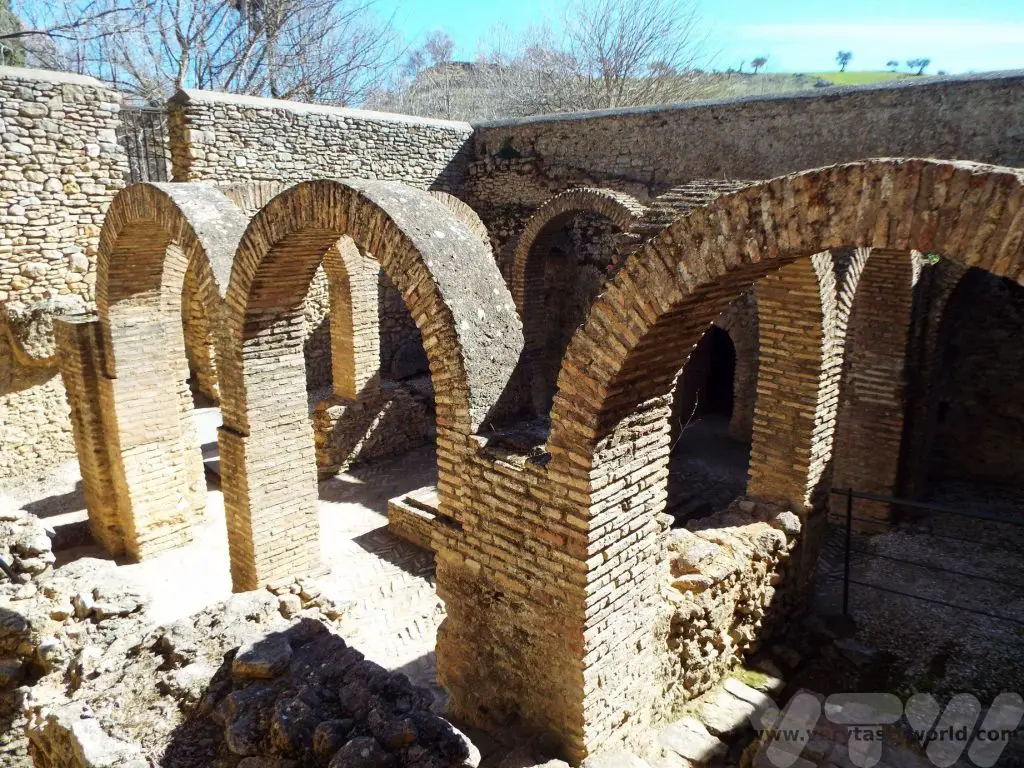
The baths are located next to the river to ensure a constant water supply, and were constructed partially underground in order to control temperatures. There are many similarities with the design of Roman baths.
The baths here are remarkably well preserved (in fact they are considered to be the best in Spain) and it is possible to visit the cold, warm and hot bathing rooms as well as some of the sanitary facilities. There is a central room with vaulted ceilings and wonderful star shaped skylights.
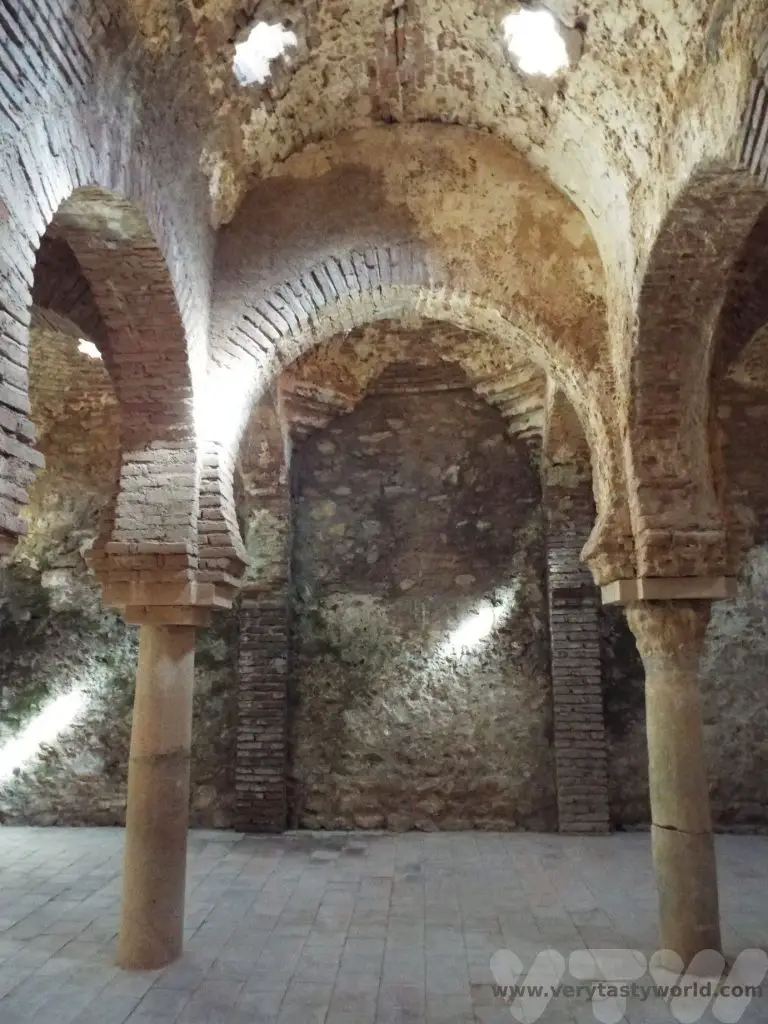
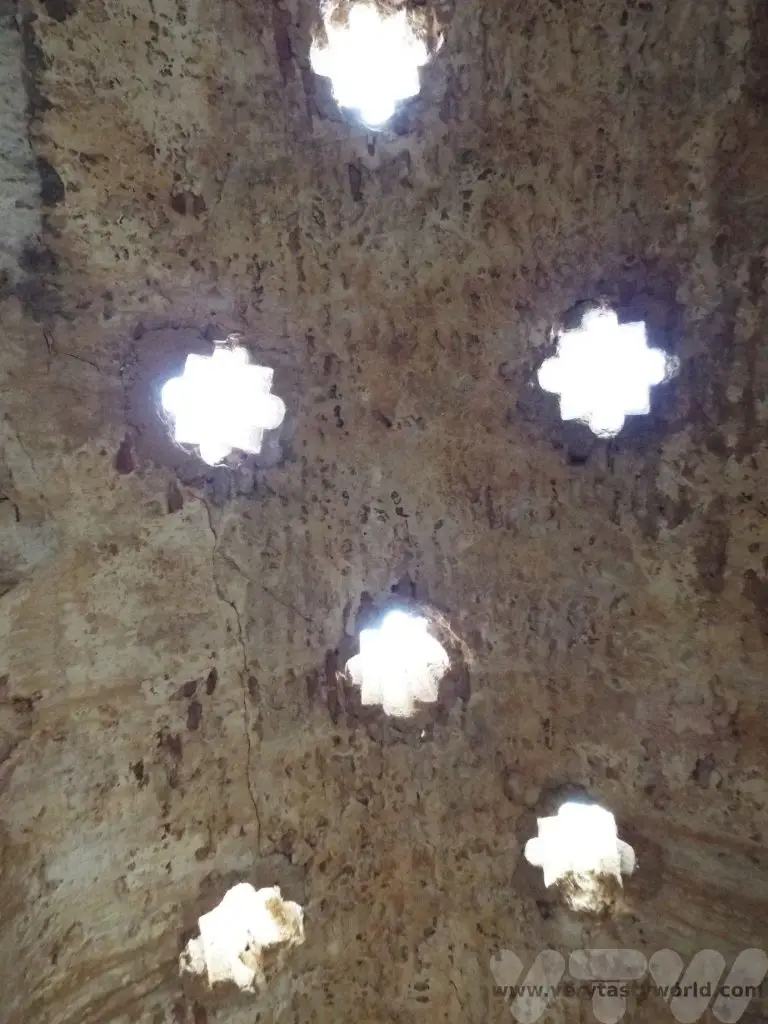
Outside the main baths is the water pump tower, known as a saqiya. A donkey would have turned a wheel to pump water from the river, which would flow along an aqueduct towards the boiler room, which heated the water for the baths.
The Water Mine and Garden Palacio del Rey Moro y La Mina
We found this to be disappointing and not very good value for money. The main attraction of interest was the water mine – a staircase that leads from the top of the gorge down 231 steps that have been carved into the rock to reach the river below. The history is interesting: the mine was the only source of water for the city. In Moorish times, Christian slaves, chained to the steps, were used to carry the water in bags up to the top. When a Christian army invaded the city in 1485 the mine was blockaded and the inhabitants of the city lost their water supply. It is possible to enter the mine and walk down the steps.
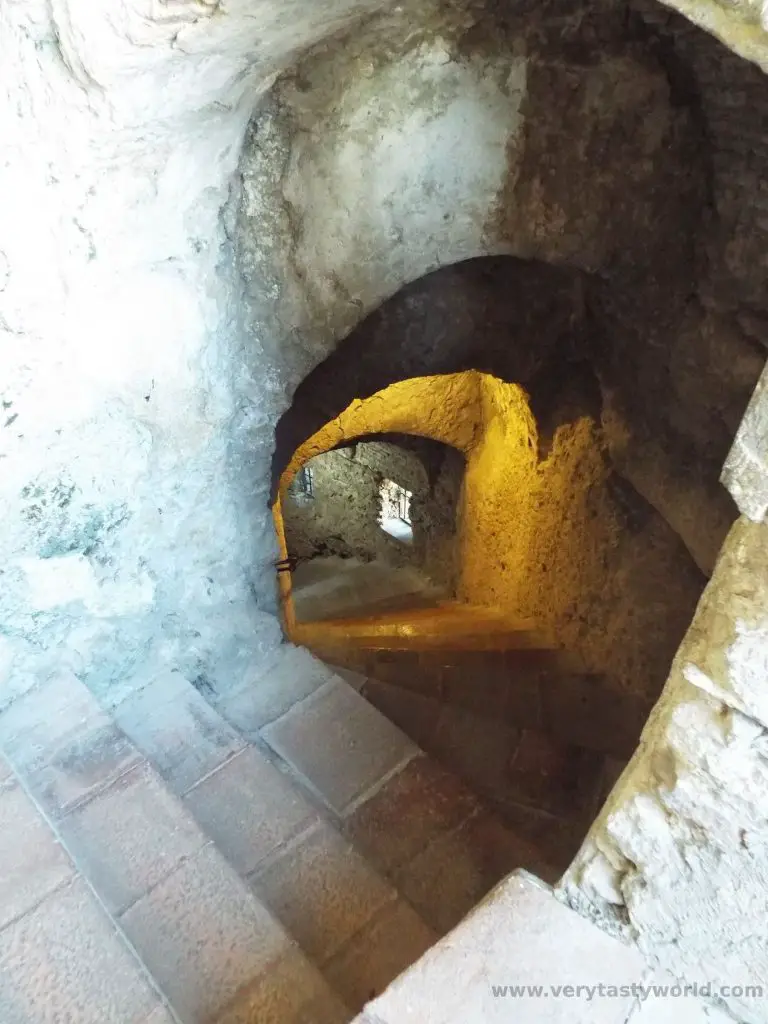
Beware, though, the steps are well maintained at the start but soon get slippery. It would have been helpful if the warnings about steep, slippery steps had been given outside the entrance, before we paid up, and entered the site. And, what goes down must come up, so be prepared for a long climb back.
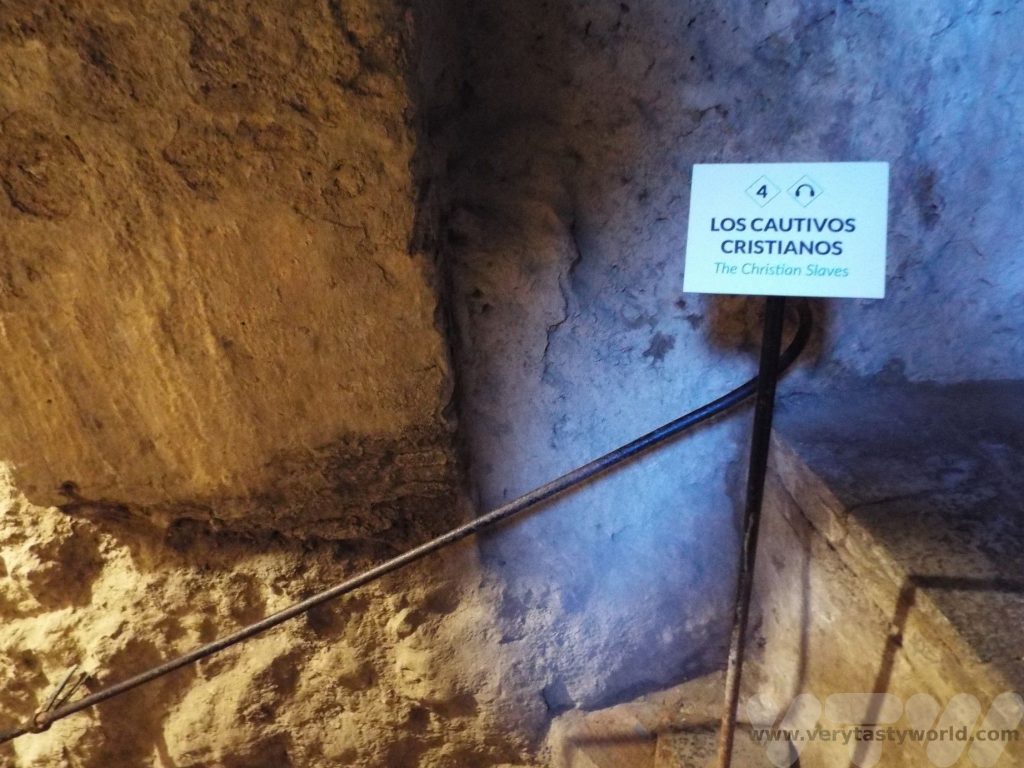
The garden of the Moorish King’s palace is pretty but not extensive. Also, it was built in the 18th Century, long after the Moors had gone, and the garden was designed in 1912, which feels like a bit of a cheat.
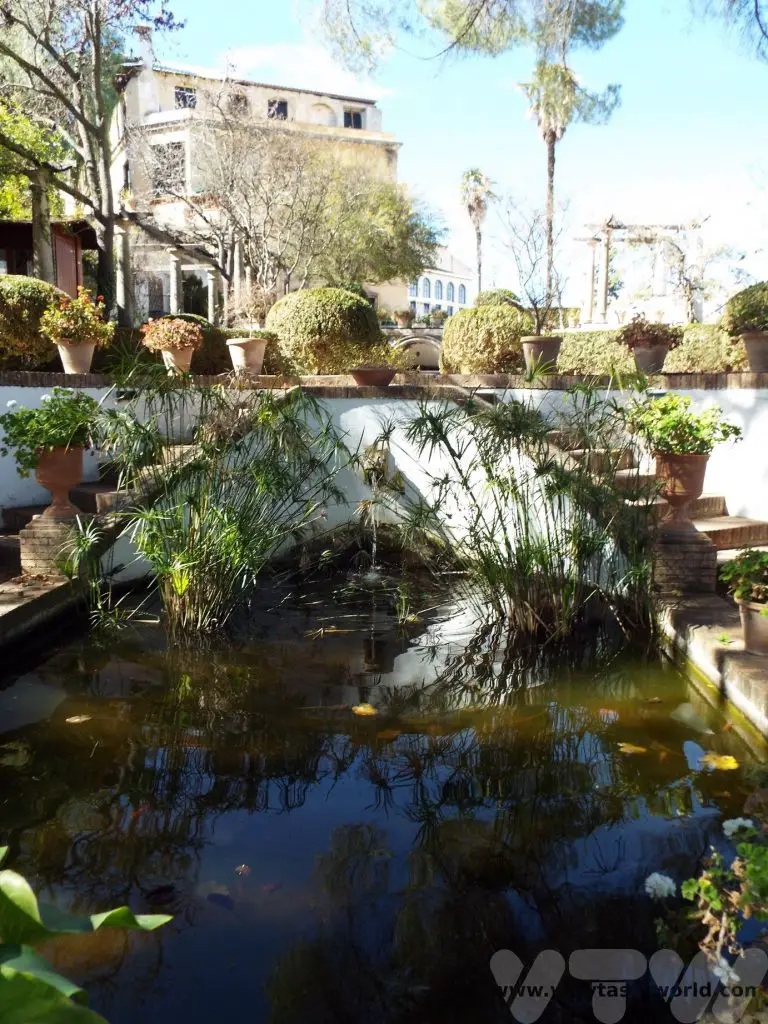
The Bullring
Ronda is considered the place where modern bullfighting began. At the Plaza de Toros, Ronda has a large bullring, built in 1785, which is one of the oldest in Spain. There is a museum which gives a history Bullfighting is a part of Spanish culture and history but it wasn’t something that we wanted to see. If you are in need of visitor information, the tourist office is located close to the bullring.
Next to the Plaza de Toros is a small park with two unusual statues by sculptor Seville Parra. Film director Orson Welles and author Ernest Hemingway both fell in love with Ronda and Spain. Hemingway wrote about Spain in his novels Death in the Afternoon and For Whom the Bell Tolls. Welles was so taken with Ronda that his ashes are buried close by, in a well on the estate of his friend, bullfighter Antonio Ordóñez. The park itself offers some nice views of the surrounding area.
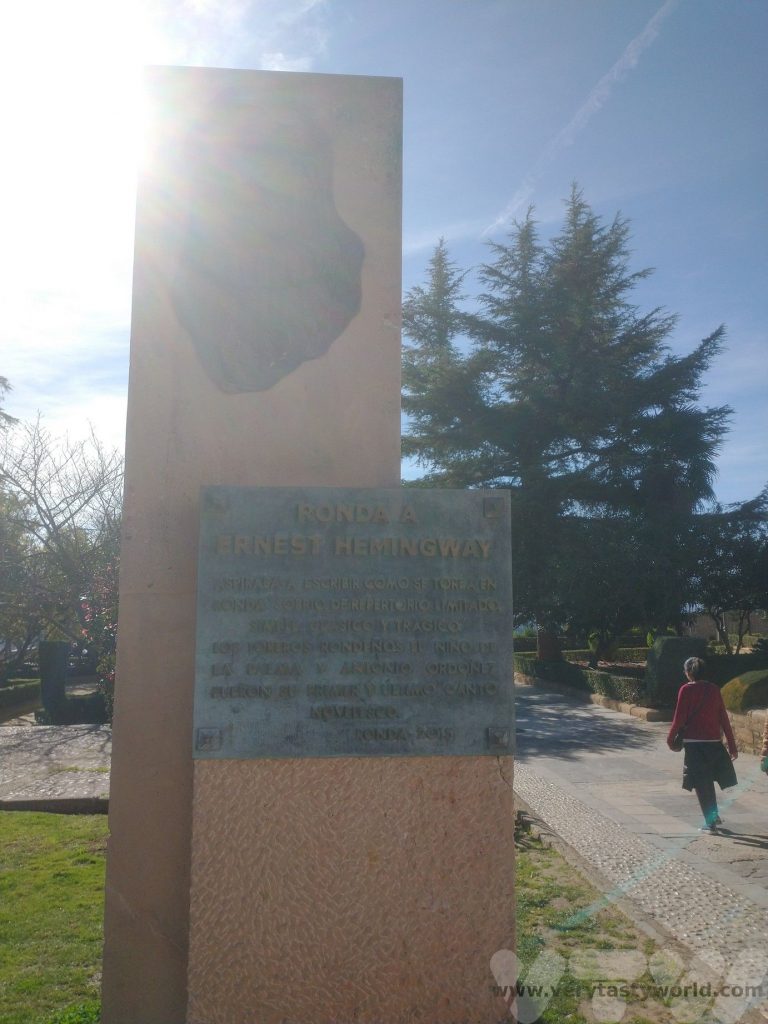
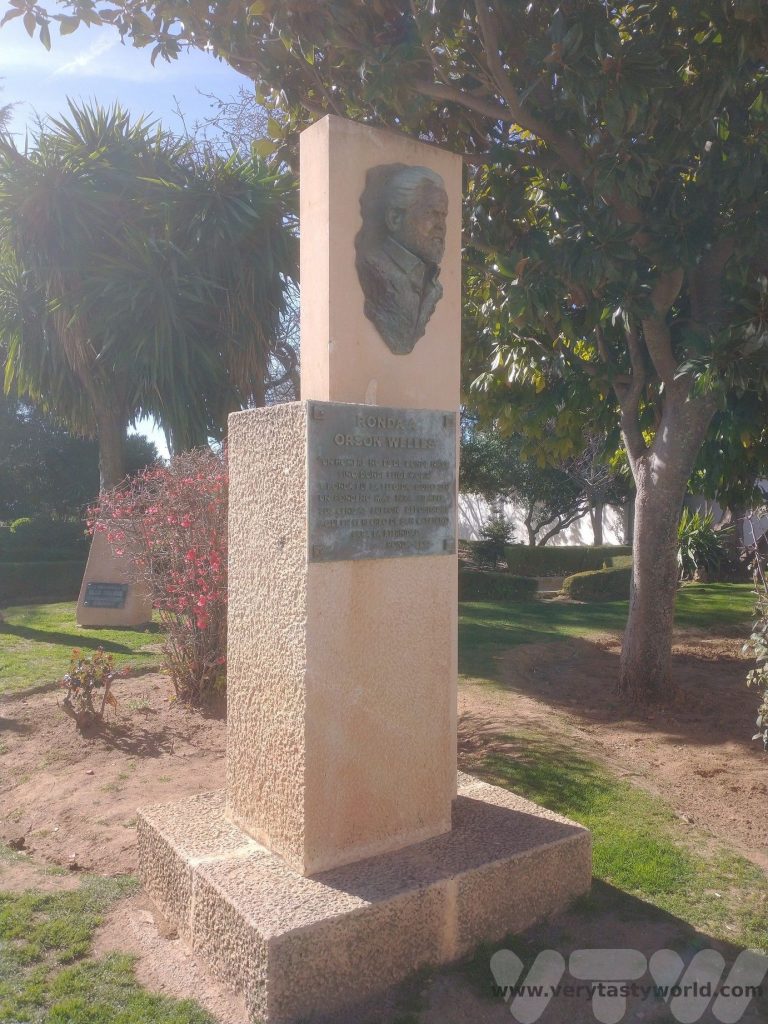
It’s lovely just wandering through the town. The oranges were already ripening on the trees.
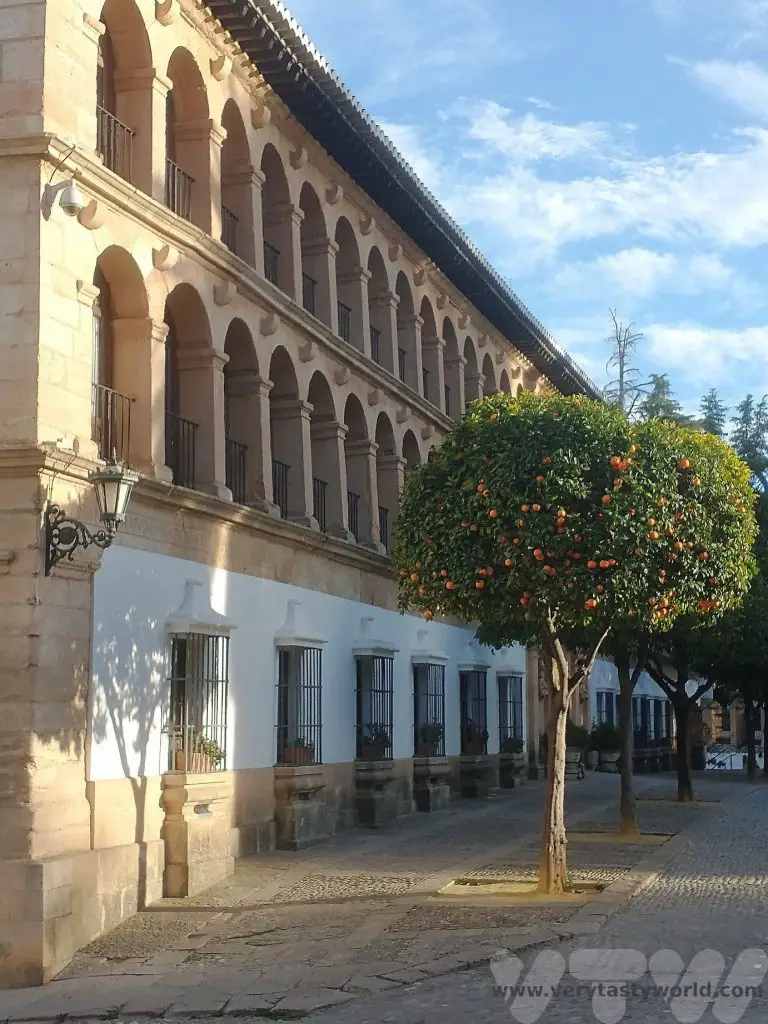
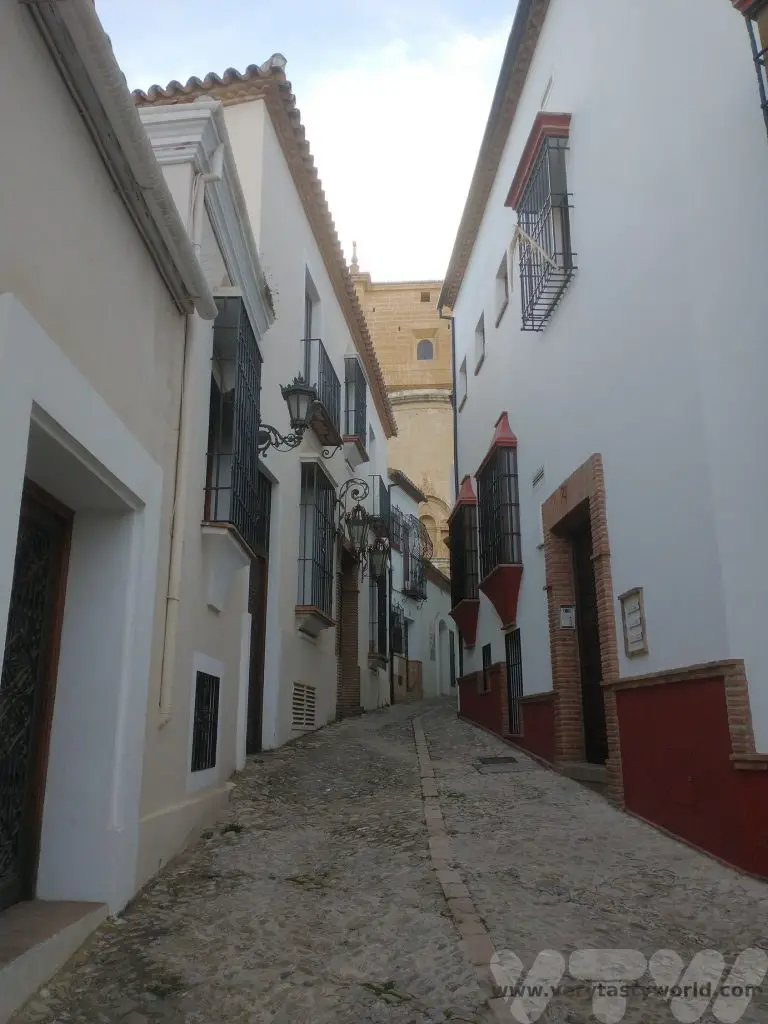
Eating in Ronda
In terms of eating, like much of Spain, Ronda has its fair share of restaurants that offer a menu del dia at lunchtime – a fixed price set menu which is usually good value. Bear in mind that the restaurants are likely to be busy at lunchtime because of the day trippers. Prices in the evening are likely to be more expensive. Sadly some of the restaurants we wanted to visit were closed, so we contented ourselves with tapas followed by churros.
Meats and cheeses in Andalusia are fantastic – with a wide choice available and all delicious.
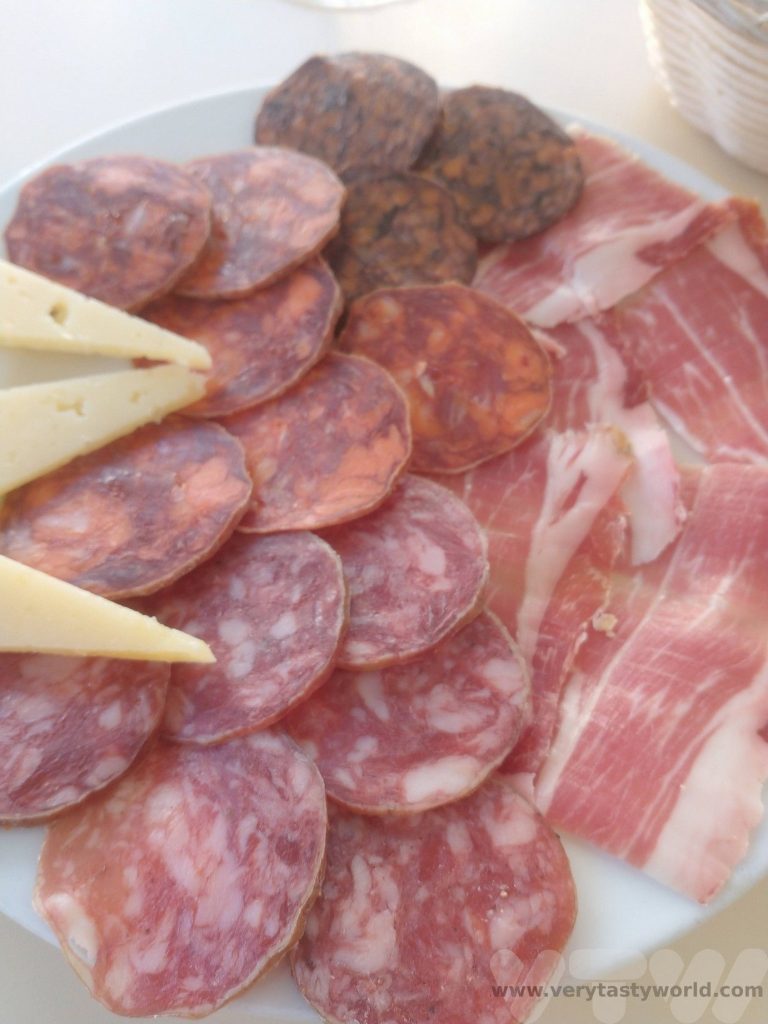
Churros are cylindrical fried dough delights. They can vary in shape and length – some thicker, thinner, longer or shorter, but they usually have a ridge along the length due to the dough being piped into the sizzling oil using an implement called a churrera, which is a bit like a syringe with a star-shaped nozzle. They may also be coated in sugar. Churros are traditionally dipped into hot chocolate, which is rich, thick and deeply chocolatey.
Churros are usually eaten at breakfast but there were restaurants all over Ronda offering them as daytime snacks. They are popular so some cafes may run out later in the afternoon. They are so sweet! We got such a sugar rush we felt like we could have run up and down the gorge several times after eating them.
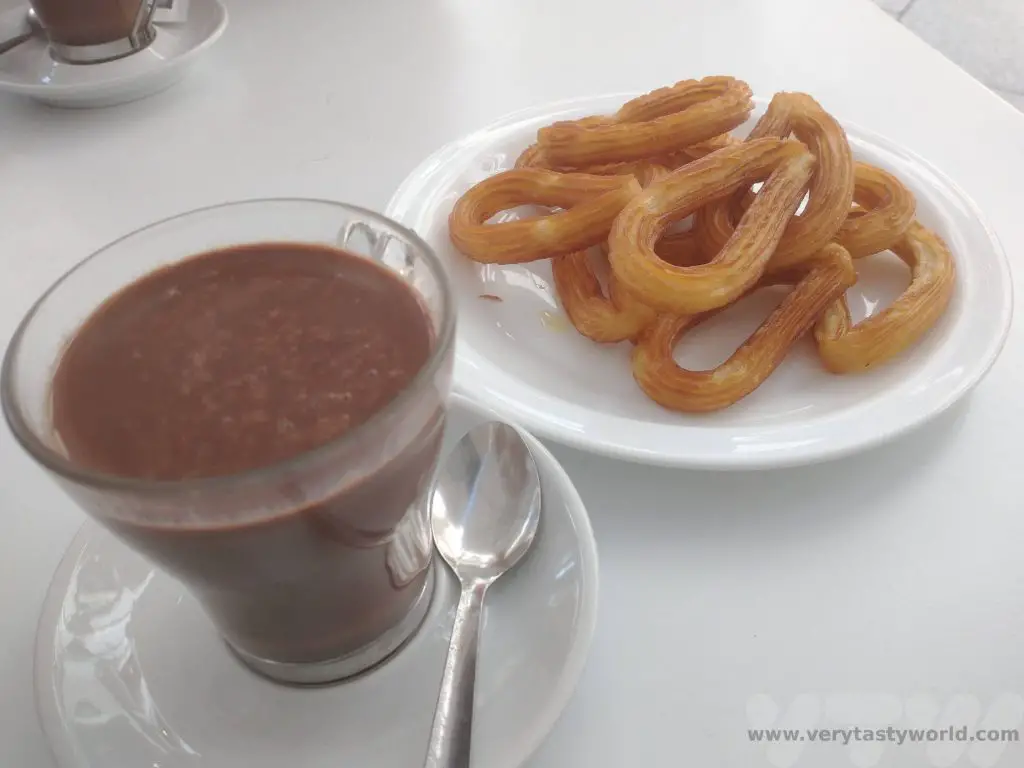
While many people spend just a day in Ronda day, we would actually recommend an overnight stay if possible. One of the reasons for wanting to stay overnight was that we could see the bridge lit up at night. The daytripper crowds will have melted away by this time.
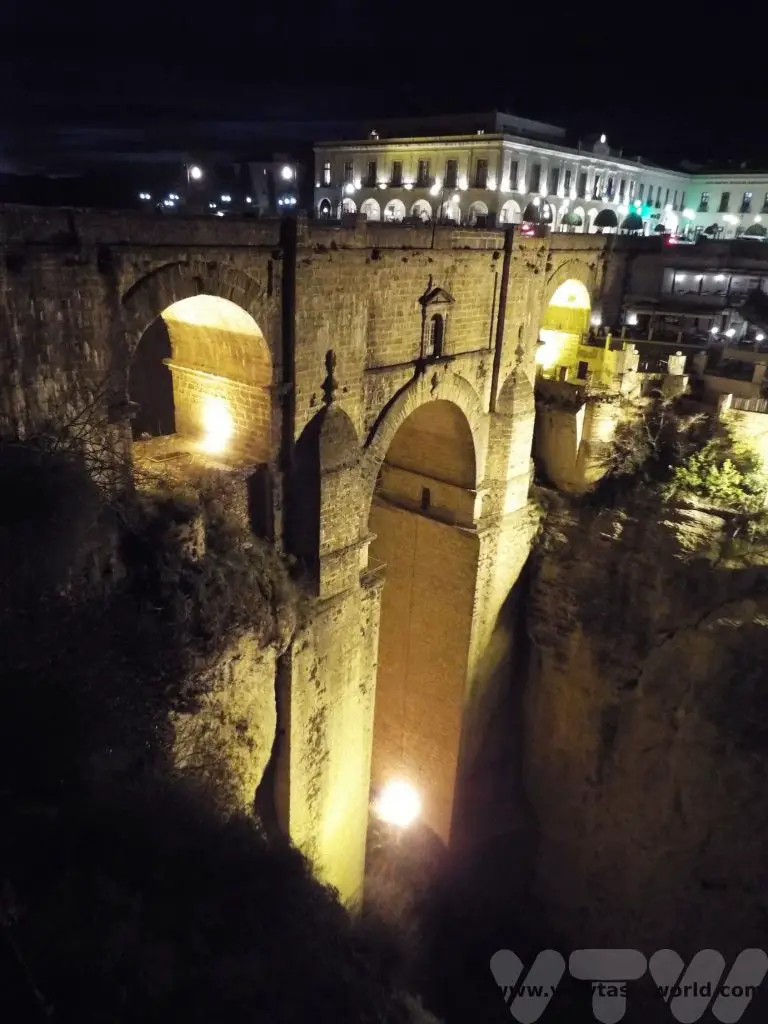
We paid a bit extra for a room with a view of the bridge. It wasn’t quite what we expected – it did include a bit of the bridge but the hotel’s claim that we had a ‘bridge view’ didn’t really meet our expectations. Hey ho.
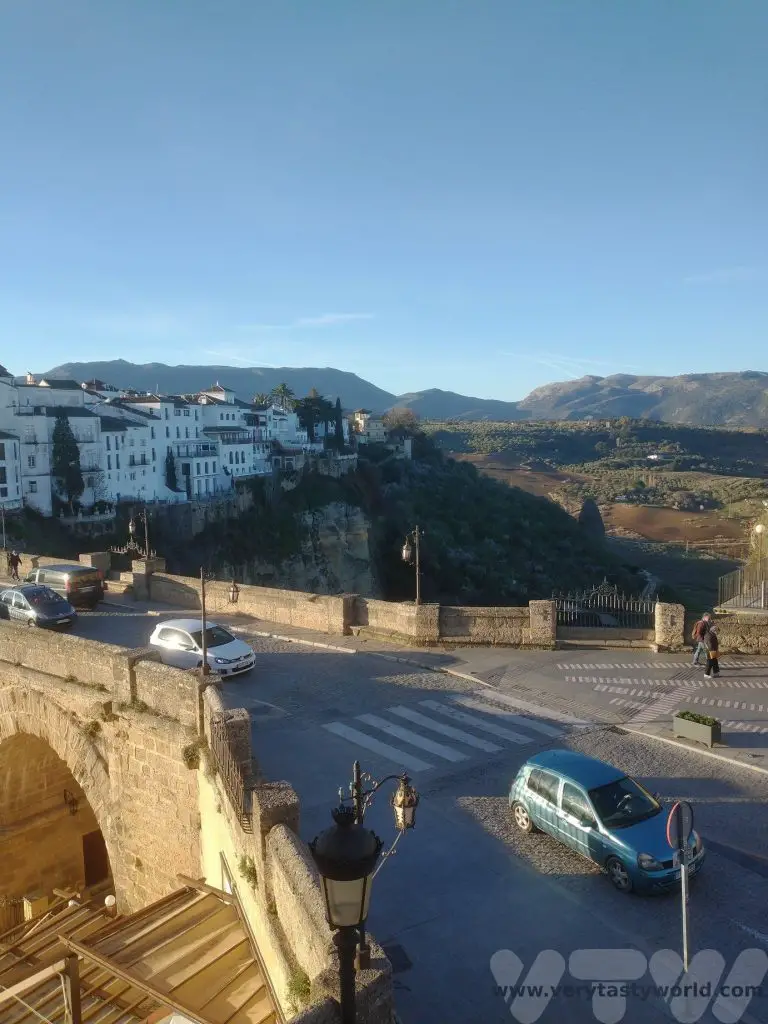
Much better was eating a traditional Andalusian breakfast in their restaurant…
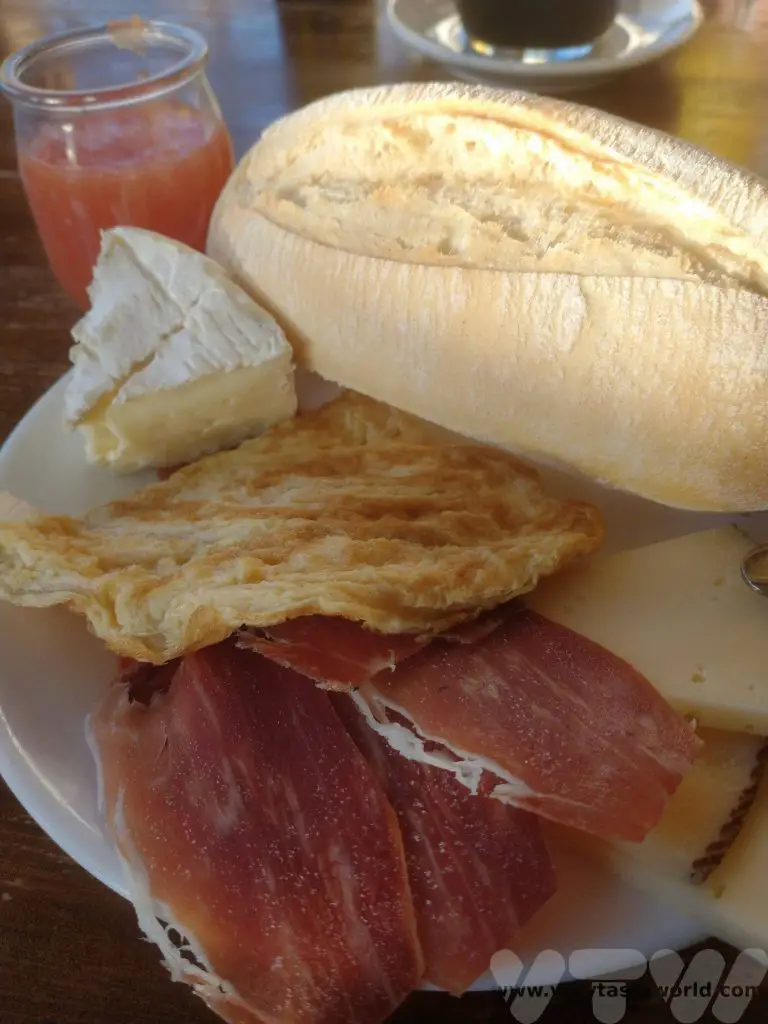
…overlooking the gorge on a beautiful misty morning.

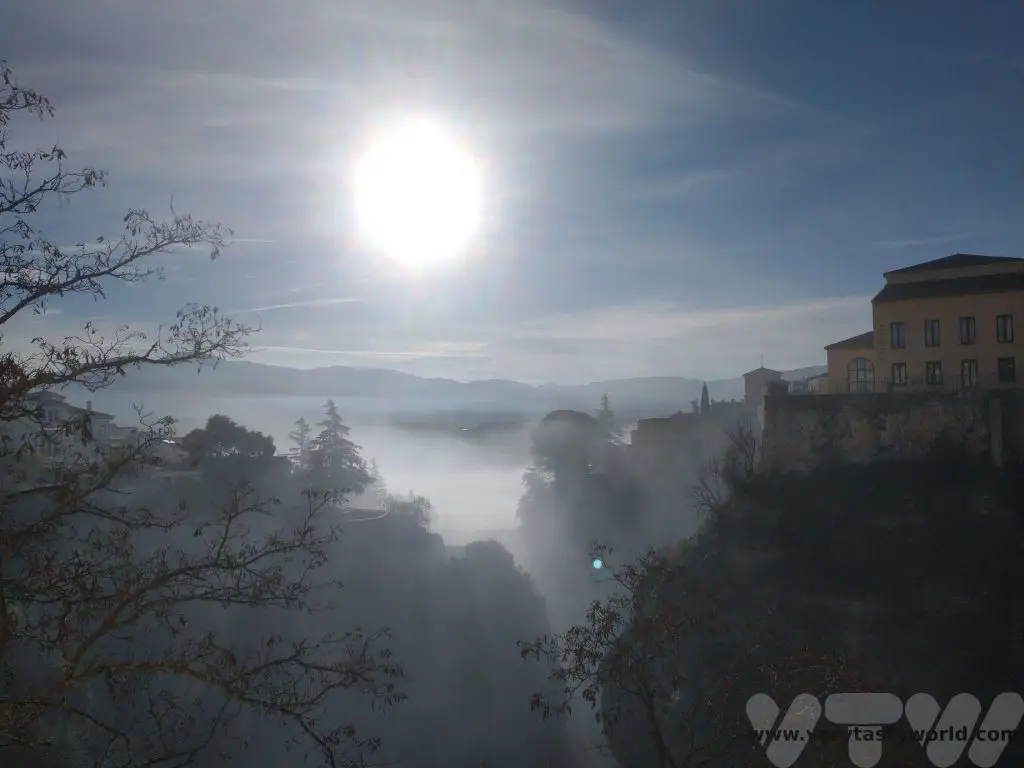
Related Posts You May Enjoy

RECIPE: Salmorejo
Andalusian Cold Tomato Soup
In Spain, cold soups are perfect for a hot summer’s day. Gazpacho is probably the most well known – a blend of fresh tomatoes and other vegetables, such as cucumber, peppers and garlic. Salmorejo is another cold soup, which also originated in Andalusia. We first tried it in a tapas restaurant when we visit Seville and absolutely loved it. It is a blend of tomatoes but has the addition of bread which thickens the soup. It’s a great soup that also helps to avoid food waste as it works really well if the bread is slightly stale.
In the UK tomatoes aren’t that great. Supermarkets often sell perfectly round, perfectly red tomatoes that basically taste of water. We go to our local market for our toms or grow our own. (And home grown always taste better.) What is great about Salmorejo is that even if the tomatoes are a bit insipid, the flavourings ensure that the dish will be delicious.
Our recipe for salmorejo is really easy to make but you will need a blender. This will serve four if part of a wider tapas meal/starter or two hungry people. Also, it’s the sort of soup that you can make first thing in the morning and let the flavours infuse during the day. It even tastes great after being in the fridge overnight.
Ingredients
About 10 ripe tomatoes
3 slices of stale white bread
Clove of garlic (or another if you like garlic but we prefer subtle garlic here)
Good slosh of extra virgin olive oil
Salt and pepper
1 boiled egg per 2 servings
Couple of slices of ham
Method
First of all the tomatoes need to be skinned. The easiest way to do this is to cut a cross at the end of the tomato (the opposite end to the stalk). It doesn’t need to be precise and it doesn’t matter if you cut into the tomato’s flesh -it’s all going to be blended anyway.
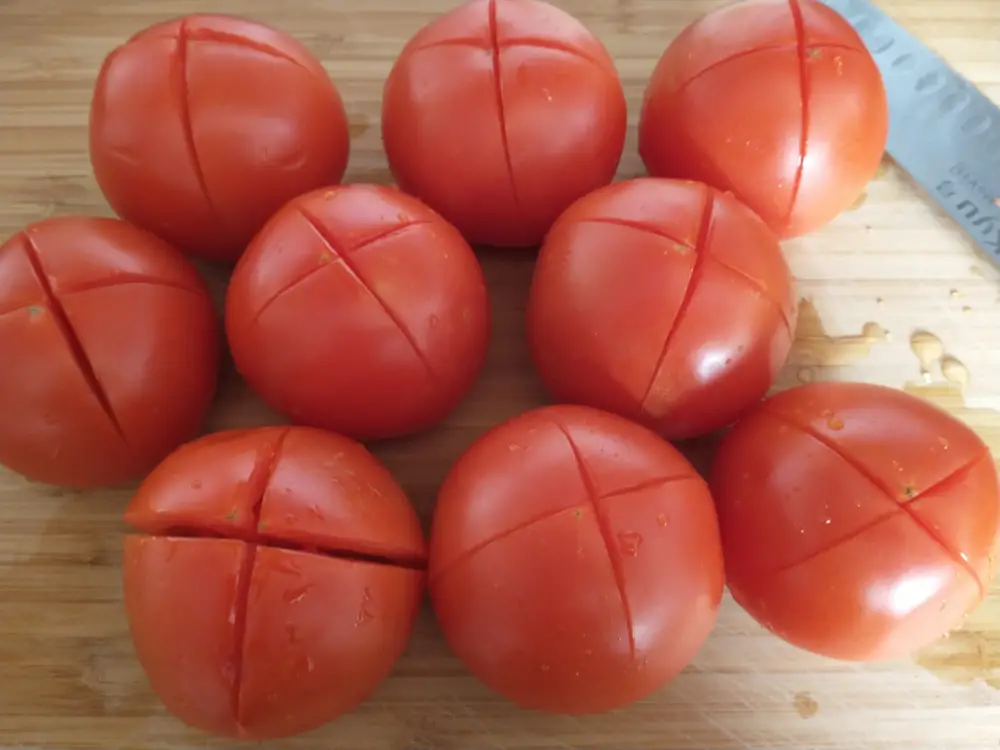
Pour boiling water over the tomatoes and let them sit in the water for a couple of minutes. Then transfer them to a bowl of cold water.
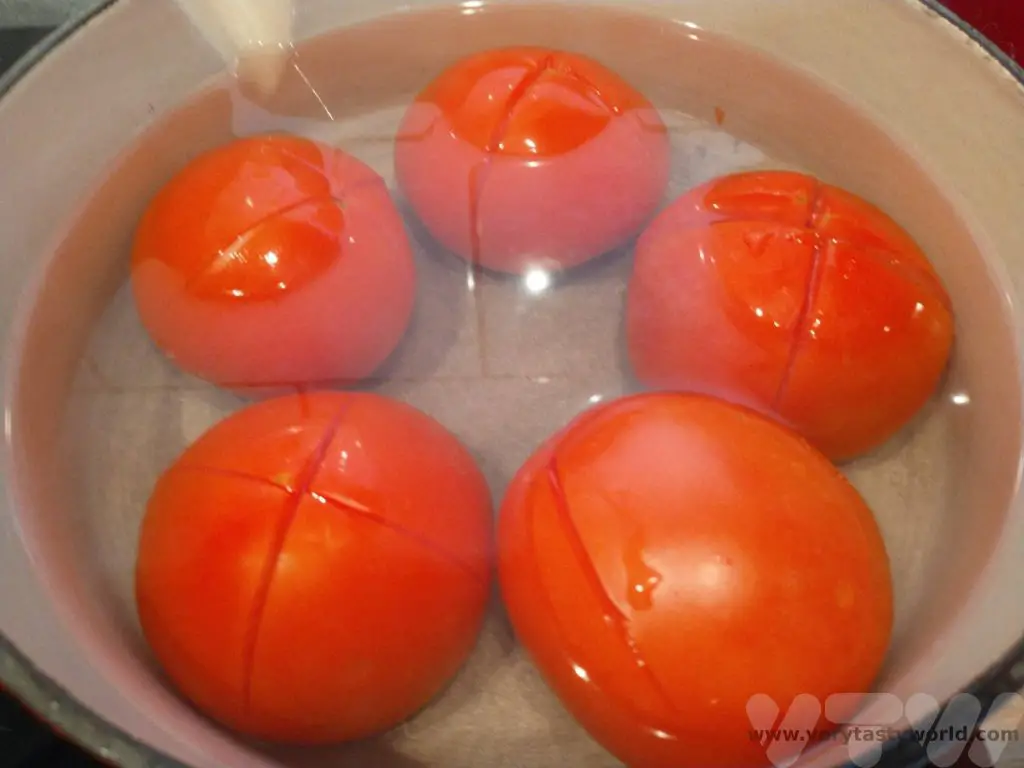
Grab a corner where the slice was made and the skins should just peel away. It’s not the end of the world if you don’t get all the skin off.
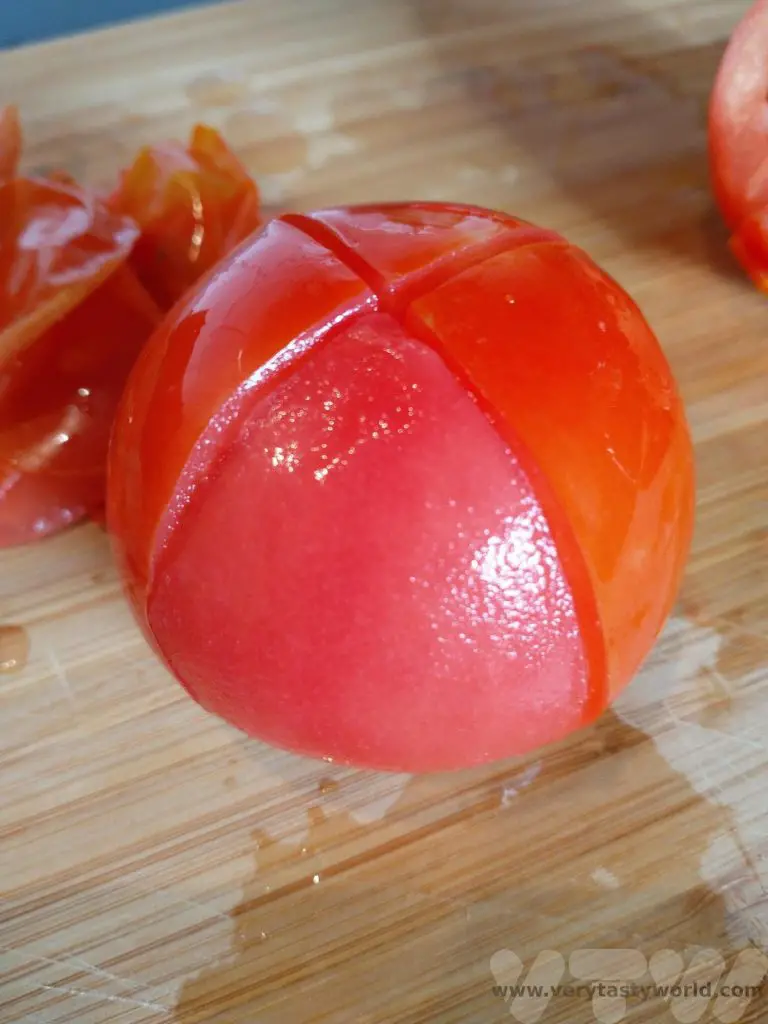
Put the tomatoes in the blender and give them a quick whiz.
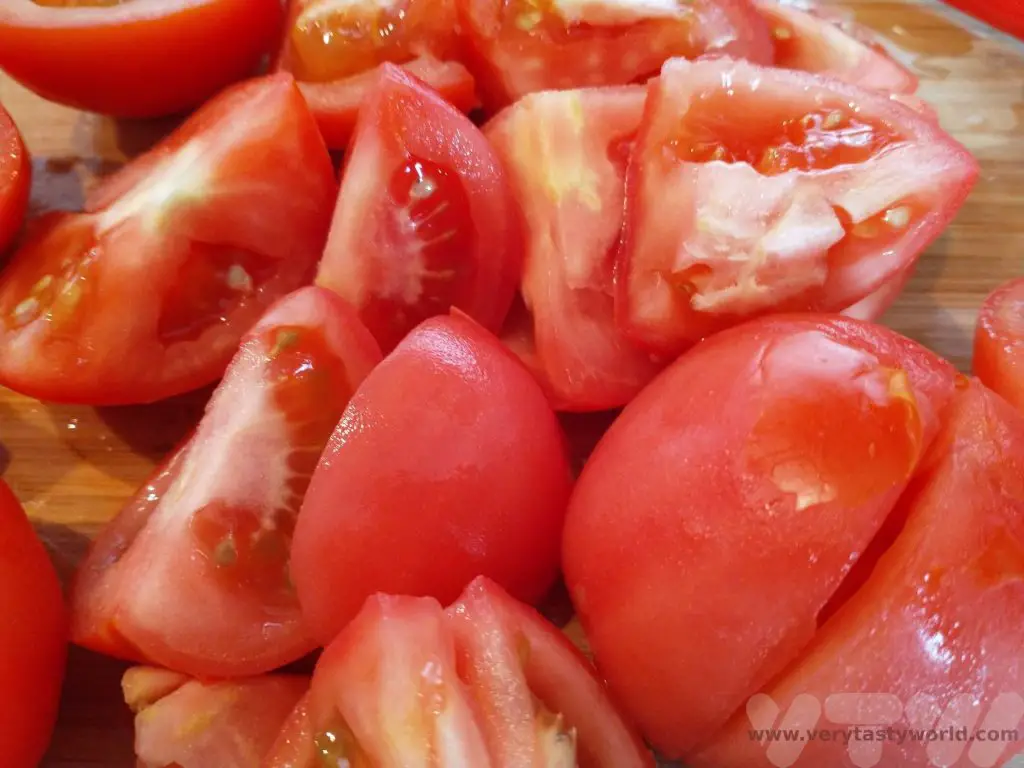
Then tear the bread slices and add those, along with the garlic, oil, salt and pepper.
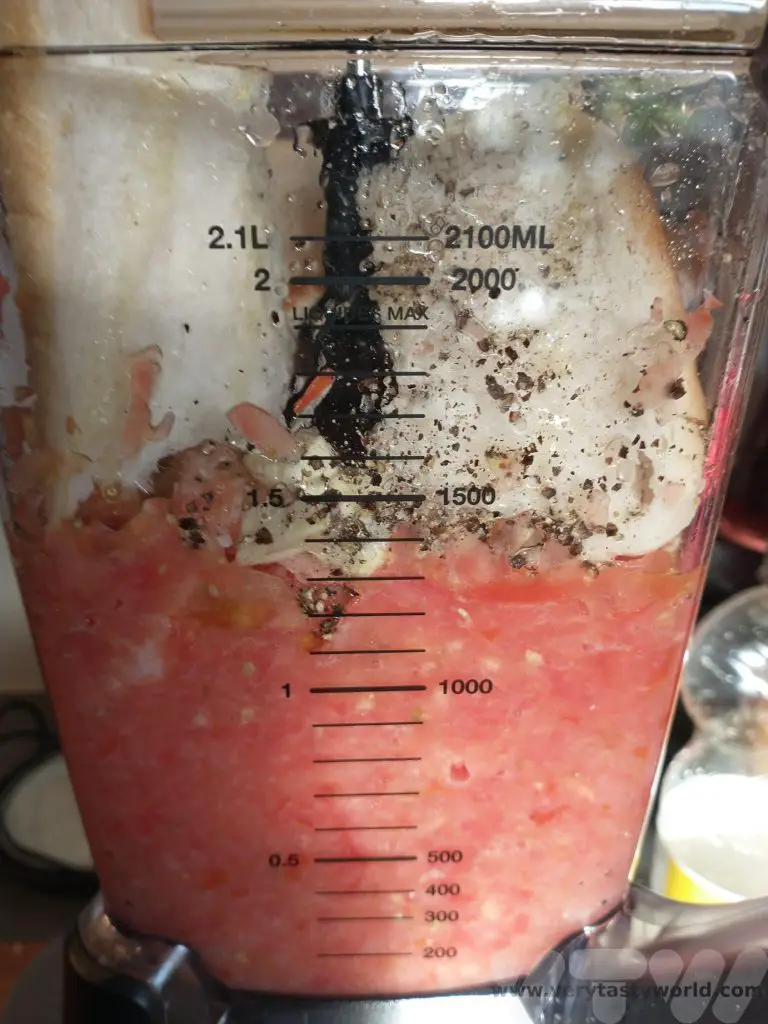
Blend again until you have a smooth, thick soup.
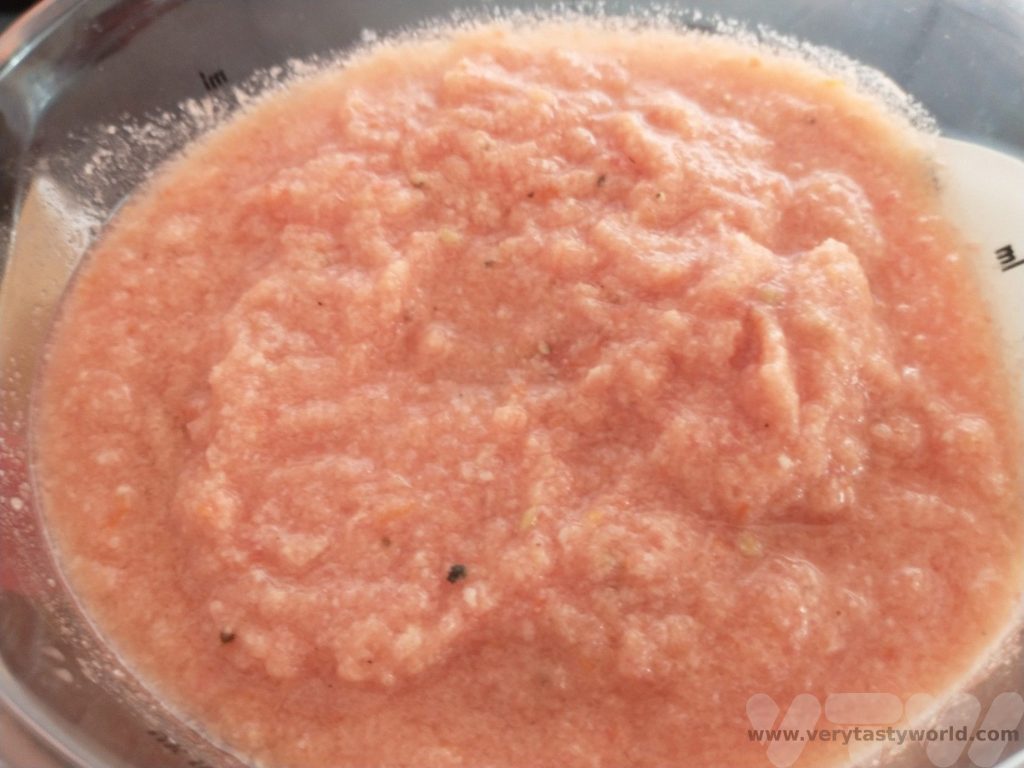
Pour into a jug then put into the fridge and let the flavours infuse.
Serve into individual bowls and garnish with chopped boiled egg and/or chopped ham.
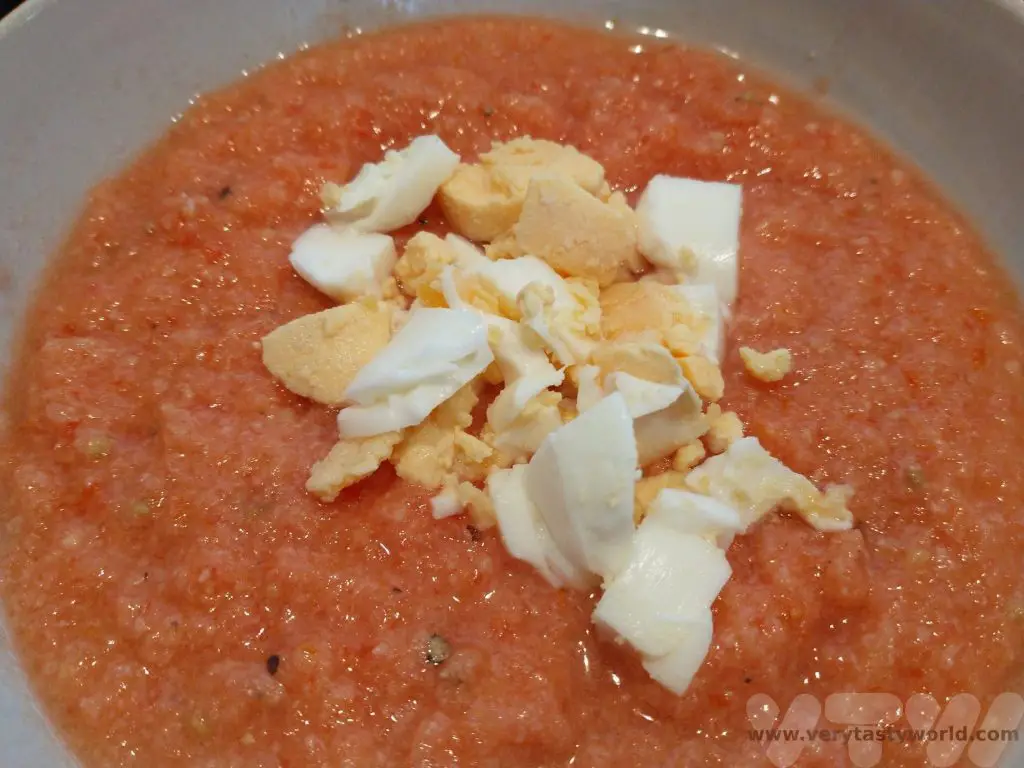

- RECIPE Oyakodon Donburi
- Zero Waste Recipes Before Your Holiday
- RECIPE: Vegetable Biryani Tamil Nadu Style
- RECIPE: Vegan Wild Garlic Pesto
- Recipe: Venetian Pasta Sauce
- RECIPE: Biryani Raita Recipe
- RECIPE: How to Make Costa Rica’s Gallo Pinto
- Recipe: Japanese Simmered Pork Belly – Buta no Kakuni
- RECIPE: How to Make Umeboshi
